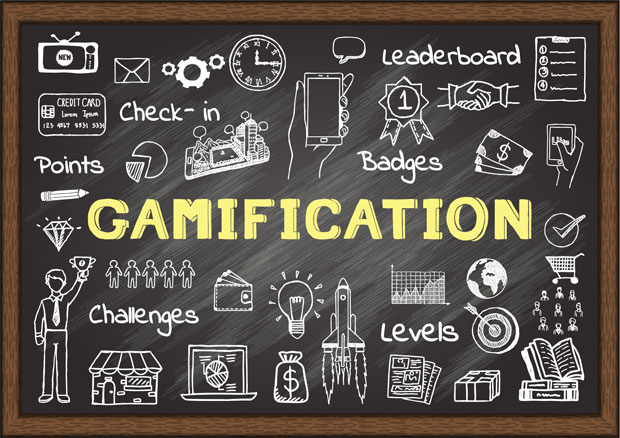Amid shifting consumer habits and the digitization of everything, the retail landscape has undergone significant transformations over the past decade, and it continues to evolve as quickly as ever. These transformations bring about a slew of challenges and opportunities for retailers to improve the overall shopping experience.
With traditional retail strategies gradually losing their efficacy in reaching their intended target audience, more innovative alternatives have entered the market. One such technique is gamification — the idea of utilizing game-like mechanics with the intent of driving greater consumer engagement and, by extension, incentivizing brand loyalty.
Innovation at the Heart of Next-Generation Retail
The rise of online shopping has forced the traditional retail industry into a state of crisis. In a rapidly shifting digital landscape, success depends largely on a retailer’s ability to make the necessary adjustments and align with evolving consumer needs and desires. While there is no shortage of companies investing in new technology to attract and retain customers, innovation also means finding new ways to do the same things in a more efficient manner.
Today’s consumers have become conditioned by the convenience and personalized experience of e-commerce. As a result, it is essential for brick-and-mortar retailers to integrate the features and experiences that customers receive while shopping online into their physical stores.
A store today functions as more than just a place to display your products. Rather, it has evolved to become a space that provides both real value and positive engagement to customers. It should activate your customer’s belief in your product, communicate your brand values efficiently, and build loyalty through quality interactions.
Increasingly, the best and most effective loyalty programs will incorporate gamification mechanics and focus on engaging customers instead of simply pushing for one-time transactions from them.
More than 80 percent of millennials want to receive rewards not just for their purchases but also for their interaction with brands, suggests one report. Furthermore, close to one in three of all survey participants, and 40 percent of millennials, believed that games should be integrated into loyalty programs.
To capitalize on this, retailers should introduce gamification into their marketing strategies to drive engagement beyond purchases, reward consumers for their interactions, and establish ongoing loyalty relationships.
In this highly connected generation of consumers, gamification allows businesses to build meaningful relationships with their customers and retain them, which is why more and more businesses have begun to adopt the play.
Brands like Domino’s, NBC, Nike, and Victoria’s Secret have used gamification strategies to appeal to mobile users and attract customers. For instance, NBC’s app allows users to enter information about their viewing preferences and allows them to watch shows in exchange for reward points. Pizza chain Domino’s has a mobile game app featuring pizza-themed challenges offering players points to redeem for free pizza.
Bidding Farewell to the Age of Irrelevance
Gamification allows brands to improve participation among consumers, leading to increased interactions, improved user experiences, and stronger retailer-consumer connections. In turn, gamification allows retailers to address one of the perennial challenges they continue to face in how they can make their brand more approachable and personable.
For instance, by rewarding a particular activity or behavior, retailers incentivize players to engage with their products, increasing the likelihood of a purchase. Borrowing from classic video games, rewards in the form of tokens, badges, and exclusive offers can bring out the competitive spirit in consumers, encouraging repeat visits in order to unlock new goals, levels, and achievements.
Giving shoppers the ability to share their achievements on social media by way of shareable leaderboards adds another layer of motivation while simultaneously boosting brand awareness through word-of-mouth marketing and engaging like-minded peers to join the fun.
Through gamification, a consumer’s experience of engaging with a retailer becomes more dynamic and multifaceted, transcending the act of simply making a purchase by transforming it into an enjoyable activity. Driving repeat activity by newly acquired customers, gamification offers retailers valuable insights into consumer preferences that can help them better target and retain them. Retailers can foster more long-lasting, trusted relationships with their consumers while providing more meaningful and relevant content.
Tokenization, the Potential Game Changer
While gamification can both draw in new consumers and deepen relationships with an existing customer base, the introduction of a token economy and its underlying blockchain technology can facilitate this process by working in tandem to redistribute value between merchants and customers.
Blockchain’s ability to provide secure record-keeping makes it suitable for implementing and tracking the mechanics of a game or loyalty program. The use of tokenized alternatives such as cryptocurrencies gives customers more flexibility with their loyalty points, as they can be exchanged for other cryptocurrencies or their local fiat currency. Tokenization enables the creation of a cohesive offline-to-online ecosystem, bridging the gap between virtual and reality.
As the digital economy continues to evolve, tokenization is yet another step forward for retailers seeking to innovate in order to best serve a tech-savvy consumer base while simultaneously improving the user experience and increasing efficiencies for existing processes.
Beyond ‘Disruption for Disruption’s Sake’
The advent of blockchain gradually has opened up a myriad of possibilities across various industries, including retail, but the technology in itself is just a tool. Technological transformation holds great promise for retailers, but its success is not guaranteed. Ultimately, it largely comes down to how well retailers can tap into the power of the technology and apply it to their existing marketing strategies and business models.
In the past, a brand simply could launch a TV commercial, pair it with some print and radio, and watch sales skyrocket. Times have changed since then. In this new era of instant gratification, it’s all about user experience. Creating a memorable experience that surprises and delights customers will pay exponential dividends in terms of brand loyalty, building emotional connections, and fostering consumer-brand relationships.
Retailers no longer should think in terms of shopping silos. Instead, they should look at how the physical, online, and social worlds can borrow the best elements from each other and merge boundaries to deliver the best omnichannel shopping experience for their consumers.
The merit of brick-and-mortar retail still exists: Online shopping is convenient, but customers still want the tangible and social experiences they can get only at a physical store.
At the same time, with the proliferation of smartphones among most target consumers, leveraging mobile strategies to drive traffic to stores will drive engagement and loyalty. Hence, by creating a unified, seamless experience between their digital channels and physical stores, retailers can gain a competitive advantage in today’s digital economy.
Retailers need to build meaning and purpose into their interactions with their customers, which often means they have to break away from the traditional paradigms that are fast becoming outdated.
Gamification taps into the human elements of fun, interaction, and gameplay to keep customers engaged. Instead of simply offering coupons, spendable points, and discounts, retailers can spice up their loyalty programs by utilizing an effective combination of game mechanics and blockchain capabilities to deliver more value to customers in return for their participation.
In the highly competitive and ever-changing world of retail and e-commerce, relevant and innovative ideas will keep companies at the forefront of developing a branded ecosystem. Brands are advised to prioritize the consumer experience, user journey, and engagement in order to connect with their customers on a more visceral and emotional level.
Ultimately, the companies that will succeed are those that pay attention to the seismic technological shifts in order to capitalize on them when the time is right.














































Social Media
See all Social Media